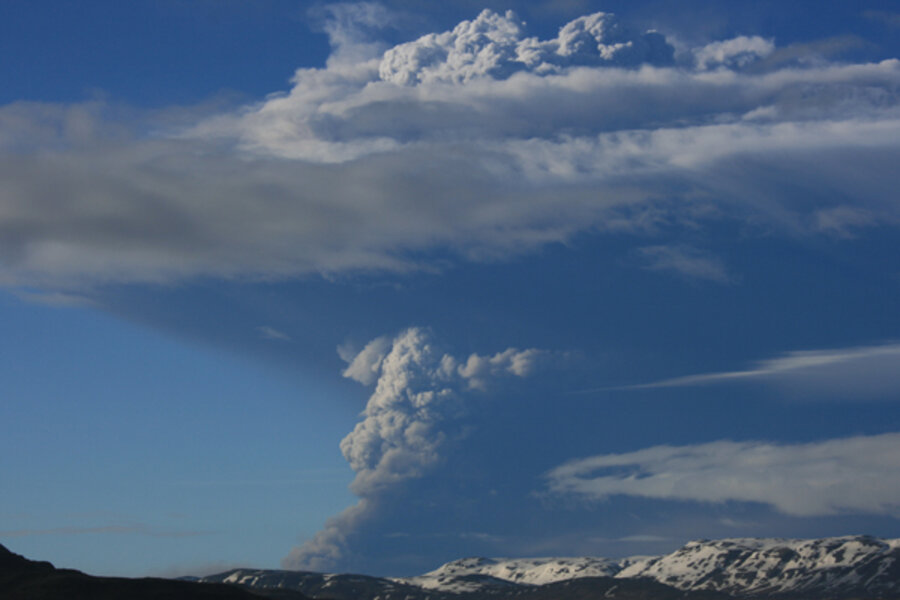Iceland volcano eruption II: volcanic ash shouldn't disrupt travel too much this time
Loading...
Concerns about major air travel disruption are mounting after Iceland’s most powerful volcanic eruption in over 50 years threw a huge cloud of ash 12 miles into the air over the weekend, a year after ash from the Eyjafjallajökull volcanic eruption reached Europe, closing much of its airspace.
Flights to and from Iceland were cancelled yesterday and Reykjavik airport is expected to remain closed today, as airlines were warned the ash could reach northern Scotland by tomorrow and even southern Europe by the end of the week, prompting concerns of much wider disruption to travellers.
Initially, European airspace was not expected to be affected but in the last two hours Eurocontrol, Europe’s air safety organization, issued a statement confirming that “some ash cloud may reach parts of northern Europe in the next 48 hours.”
As a result, it added, the European Aviation Crisis Coordination Cell (EACCC), comprising representatives from European states and aviation safety experts, had been activated “to coordinate a response that can mitigate any potential impact while maintaining established safety levels.”
Last April, European airspace was closed for six days when ash from Iceland’s Eyjafjallajökull volcano was blown south. Because of the risks posed by ash to aircraft engines, thousands of flights were cancelled and millions of passengers left stranded. The International Air Transport Association (IATA) estimates that the disruption cost airlines nearly $2 billion. The crisis is reported to have affected 29 percent of global aviation and 1.2 million passengers a day.
The eruption of Grímsvötn, Iceland’s most active volcano, on Saturday evening is believed to be far more powerful than that of Eyjafjallajökull last year. Experts estimate that Grímsvötn produced between 100 and 1,000 times more material per second when it exploded. The plume it generated was twice as high as Eyjafjallajökull’s.
The latest information from the Icelandic Meteoroligical Office suggests Grímsvötn’s volcanic activity has begun to decrease, with the plume now only seven miles high. But a leading volcano expert in Britain warned it still posed a threat to airlines. “It’s not producing as much ash as it was yesterday but it’s still producing more than Eyjafjallajökull was producing at its peak,” says John A. Stevenson of Edinburgh University.
The possibility of airport closures still existed, he added. “Most Grímsvötn eruptions over the last century have lasted less than a week, so as to how much ash is going to get to us, it depends how quickly the volcano dies off versus how quickly the wind dies down,” he says.
Forecasters predict winds will blow directly toward Britain tomorrow.
However, even if the ash cloud reaches Europe, it is not expected to cause the same kind of chaos that followed last year’s eruption. New rules have been implemented in Europe. Flights will only be grounded when the concentration levels of ash reach significant levels.
“With these new rules in place, if you had the same Eyjafjallajökull eruption again, you wouldn’t have a fraction of the disruption we got last year,” says Dr. Stevenson.
Britain's Civil Aviation Authority echoed his words. In a statement it said, “We will be discussing matters with UK airlines during the course of the day and updating the travelling public on the situation. We do not envisage the same kind of blanket closures of airspace we experienced last year. Airlines will be able to operate in lower concentrations of ash providing they can present us with a safety case.”
Despite two major eruptions in as many years in Iceland, Stevenson says Europe was unlikely to be affected so frequently in future. “On average, there’s an eruption in Iceland about every five years,” he said. “Of all those eruptions, probably about three-quarters of them are explosive and the wind blows toward the UK about a third of the time. So on average you would expect an eruption to boot ash to the UK about every few decades.”





